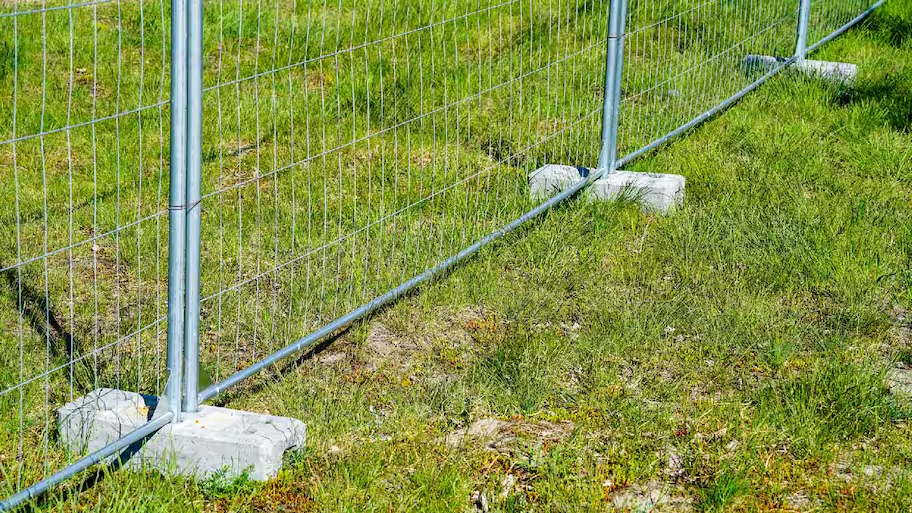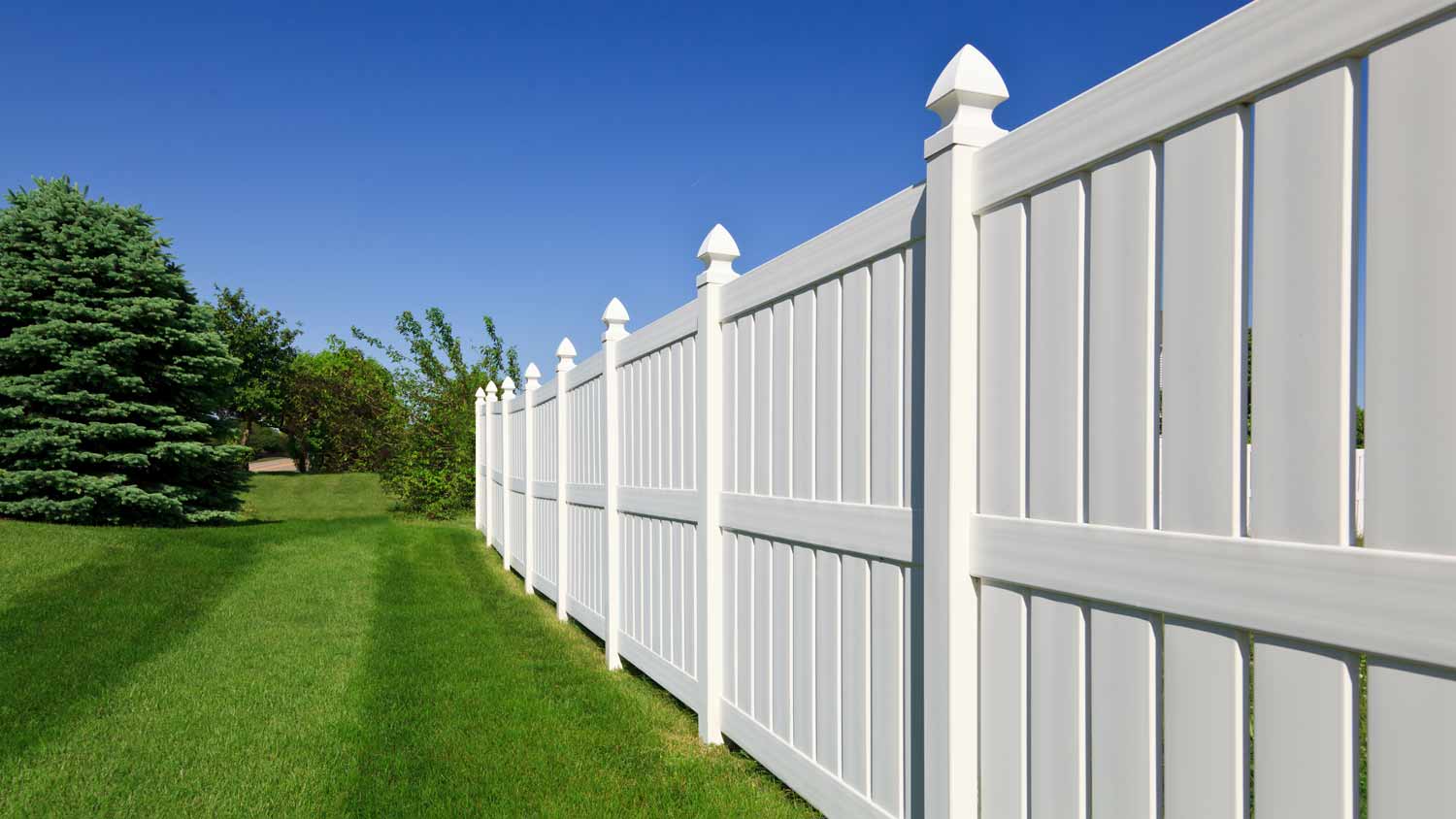
Explore the key factors that impact vinyl fence installation costs in Columbus, OH, including labor, materials, permits, layout, design, and yard conditions.
Go bold with barbed wire


Installing a barbed wire fence can help protect your home and property from all sorts of unwanted intruders, from burglars to wild animals. Compared to other fencing types, a barbed wire fence is cost-effective, and has the added bonus of being visibly intimidating—a big security boost. While it might seem daunting to install a barbed wire fence on your own, it’s a manageable project for a seasoned DIYer, provided you’ve got some elbow grease.
Building a fence requires specific equipment to ensure it is level, deep enough into the ground and properly fastened together. While you may be able to rent it from your local hardware store, we suggest contacting a pro with the proper tools and experience for the job.
Before you install a barbed wire fence, you’ll need to read and understand your local regulations regarding residential fencing. Some areas have restrictions and guidelines on fence height, materials, and distance from properties. You’ll also want to confirm your property’s boundaries so you aren’t encroaching on a neighbor’s home.
Next, be sure to research the cost of barbed wire fencing materials and make sure you are purchasing the type that will best suit your budget and scenario. Some fencing materials are available with galvanized coating, to better protect the wire against the weather and add years to your fence’s life. Coated wire, however, is significantly more expensive than wire that is not coated.
Once you are ready to install your barbed wire fence, outfit yourself with safety gear: safety goggles, work boots, heavy-duty gloves, and clothes that protect your skin. It’s advisable that you do this project with a friend or family member, as many steps are easier to complete with another set of hands.

Before embarking on this project, you’ll want to map out where your barbed wire fencing will be placed. Your map should include points where you will install the corner and gate posts, as these will anchor your fence. Posts should be roughly 6-to-10-feet apart from one another.
Be sure to consider topography, water sources, and pathways for animals, humans, and vehicles. After mapping out the area, measure the perimeter to determine the amount of wire fencing and posts you will need.
Using your map as your guide, mark the places where the posts will be placed. Use a tape measure to accurately locate the location of each post, then hammer a small stake into the location using a rubber hammer. Continue until all the post locations have been marked in this way. Once all the stakes are hammered into the ground, use string or twine to tie the stakes together. This will create a straight and level guide as you pull your fencing out for installation.

Using a manual post-hole digger, you should dig holes for each of the posts. Insert the digger into the ground at the first marker—as indicated by the stake—and break through the soil as well as any obstructions such as roots. Make sure to dig to an appropriate length; a 6-foot post should be set about 2-feet into the ground to ensure proper stability. Use a measuring tape to confirm each hole is the same depth.
The corner and end posts of the fence are its anchors, providing adequate stability and support. These posts must be installed level and plumb, and should be set in concrete or gravel so they don’t shift over time. Dig the holes for these posts a bit deeper—around 3-feet—and 12 inches wide. Place the posts into their respective holes, then pour concrete or gravel around the post to secure it in place. After the concrete has been poured, confirm that the post is level—you should do this before the concrete dries. Before moving on to the next step, wait for the concrete to dry 24 hours.
Staple the barbed wire to the bottom of the starting post. Next, unroll the barbed wire along the length of the fence line, keeping it taut. Staple the wire to each post along the fence line with fence staples; this will help keep it secure. Once you reach the end post, fasten the wire using more staples and trim any excess wire. Continue the process, unrolling additional wire up the posts until you have as much as you desire. As you add more wire, decide if you want the barbs facing upward, downward, or in a V-shape, depending on your security needs and aesthetic preferences.
Take a step back and look at your barbed wire fencing—does it look complete? You might decide that you need to add more wire strands. More fences have at least five strands, though there could be more depending on the height of the fence.
Carefully inspect your fence one last time, checking for any loose wires, damaged posts, or other signs of structural issues. All wire strands should be taut and secure, with line posts firmly anchored in place. To confirm that your barbed wire fence is up to code, call in a local compliance inspector—these inspectors work for your local municipality or city.
Installing a barbed wire fence yourself, rather than hiring a professional chain link fence company, can save you hundreds of dollars in labor. The average cost to have a fence installed is $3,206. That said, hiring a fencing professional can save you lots of time—an entire weekend or more—and the hassle of sourcing permits, materials, and equipment. An expert will make sure the project is done right the first time and is up to code.
From average costs to expert advice, get all the answers you need to get your job done.

Explore the key factors that impact vinyl fence installation costs in Columbus, OH, including labor, materials, permits, layout, design, and yard conditions.

Black fencing adds some elegance to your property while maintaining security. Use this black chain-link fence cost guide to get an estimate for your fencing.

A fence can be a beautiful and functional addition to your property. Learn all the factors that determine your fence installation costs in Columbus, OH.

If you need DIY temporary fence ideas, then you’ve come to the right place. We’ve researched several options providing semi-permanent fencing solutions for you.

If your vinyl fence has holes, dents, or other minor damage, you can repair it with a few basic supplies. Here’s how to fix a vinyl fence in eight steps.

A fence is a great way to add privacy and style to your yard. Compare two common options, horizontal vs. vertical fences, to see which is right for you.